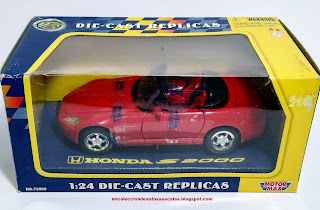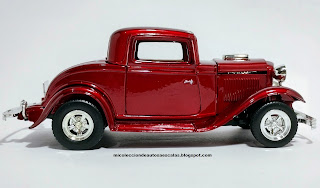You’ve heard of the Plymouth Prowler – now meet the Howler, the Mopar factory hot rod and successor to the Prowler that never was…
The name’s double meaning is enough to make you cringe, but, if anything, it was more amicable to the car that bore it. The Chrysler Howler was the factory hot rod that the smallest of Detroit’s Big Three should have made instead of the Plymouth Prowler which was a missed opportunity if ever there was one. With its wild styling and perfect stance, the Prowler represented an incredibly bold statement from a mainstream manufacturer. Nevertheless, performance was anaemic thanks to it packing a decidedly ordinary 3.5-litre V6 rather than a snarling bent eight. It was allied to a four-speed automatic, too.
Quarter-mile times of 16 seconds didn’t exactly scream road scorcher, but then there was the small matter of practicality. Nobody ever bought a hot rod mistaking it for a station wagon, but here the lack of boot space – any kind of storage space – was laughable. There was none. Chrysler Corp’s answer was to offer a trailer… The Howler rectified all of these matters and more. However, to label it a Prowler redo is to underestimate the amount of work involved. While there is inevitably a bit of debate over the precise timeline, what is known for sure is that the Howler was dreamed up by Cliff Williams.
Nevertheless, the end product bore only a token resemblance to his initial renderings. Scroll back to the late Nineties and Christopher Schuttera was a young designer within DaimlerChrysler’s Advanced Packaging studio. The recent graduate was tasked with evolving Williams’ ideas. Matters took a turn thereafter when Jon Rundels became involved.
The Concept and Speciality Vehicle Executive was seeking ways to promote the Jeep PowerTech V8 and a hotted-up factory hot rod seemed just the ticket. A preproduction Prowler test mule served as a basis for the initial proof of concept, but then matters took further twists and turns. The definitive end product was essentially a Prowler pick-up, but the new rear bodywork was beautifully integrated into the Tom Galepenned original. Distinct from the car that bore it, the Howler had a lift-off hardtop rather than a convertible hood. In order to free up cargo space in the bed, the Prowler’s bulky transaxle was replaced with a regular rear differential. This also freed up room for a larger petrol tank, which was just as well given that power came from a 4.7-litre V8 allied to a five-speed manual ’box.
Unveiled at the 1999 SEMA Show, the Howler became a media darling, but sadly there never was any talk of it making it into production. It was a runner, though, rather than just another exhibition ‘pushmobile’. When viewed in retrospect, there is one slightly nettlesome issue in that the stats don’t lie. The Howler may have sounded the part, but it was producing a rather middling 250bhp at 4000rpm. Nevertheless, this was accompanied by a useful 300ft-lb of torque at 3200rpm.
As for performance figures, your guess is as good as ours. We have yet to see any. The regular Prowler soldiered on until 2002, being given a power hike along the way. It wasn’t the car would-be customers wanted, but it served its purpose in making Chrysler Corp appear a bold, design-led firm.
It is easy to wonder what the takeup might have been had it produced the Howler instead. But it didn’t. Instead, it became just another show car forgotten by history.













































